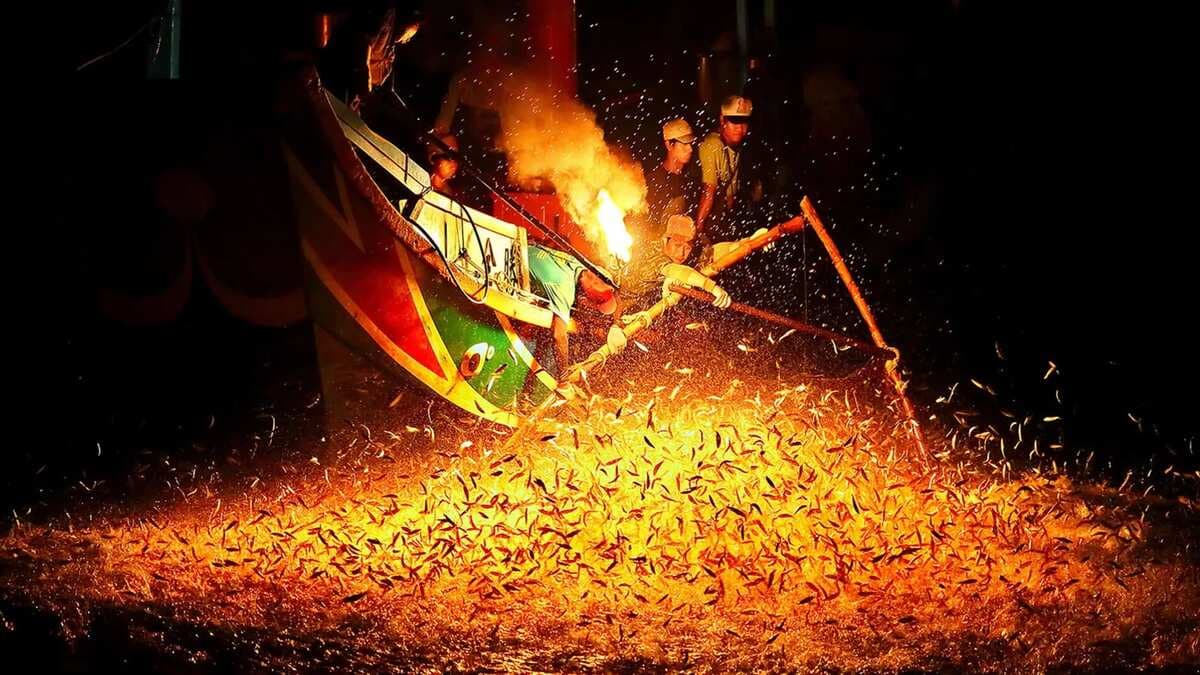Between May and July every year, fisherfolk at Jinshan - a port town in Taipei - barely get sleep. Why? All night long, they are at sea catching fish with fire. Aged around 60 years and equipped with a few rickety boats and worn-out tools, these men serve as the custodians of a century-old community fishing tradition which is now slowly losing its flame. The enthusiasm for it may be dwindling with time, but the Jinshan sulphuric fire fishing practice is one of the most spectacular traditions that the world sees during the typhoon season.
After sundown, these keepers of fishing heritage set sail off the coast from the Huangguang Fishing Harbour. They then slightly lower the bamboo sticks, one end of which is ignited using the chemical, in the water. And what you see moments later is a sight to behold. Clusters of glittering silvery fish - mostly sardines - leap out of the water in a mad rush, which are then scooped out into mesh nets. Dating back over a hundred year, this practice is said to have begun with the Basay people, an aboriginal group of Taiwan.
Why use sulphur, though? That’s because this nonmetallic chemical is an abundant resource in this part of the country. In order to create flammable gas that attracts thousands of sardines in the dead of night, the fisherfolk depend on soft sulphuric rocks found in various parts of the region. However, in recent years, the use of calcium carbide is being encouraged instead to torch the bamboo sticks.
 Facebook/Tyrone Siu (Reuters)
Facebook/Tyrone Siu (Reuters)


